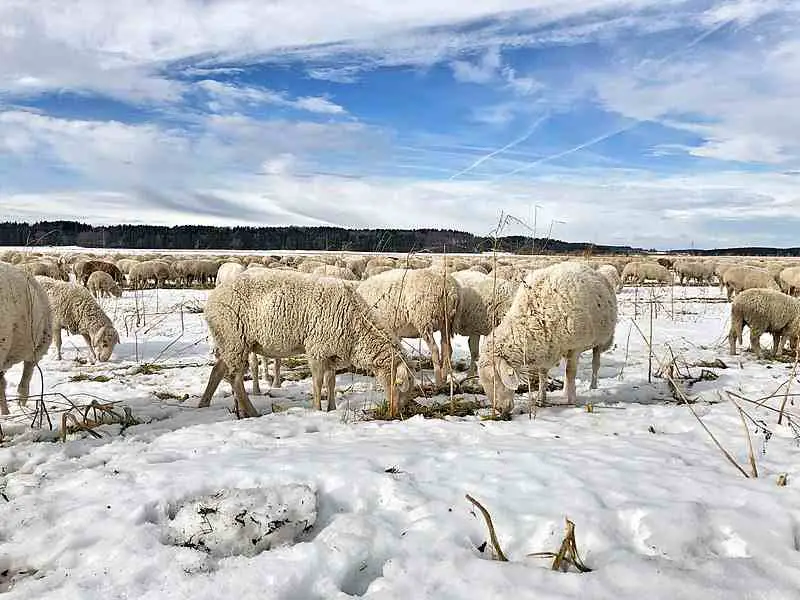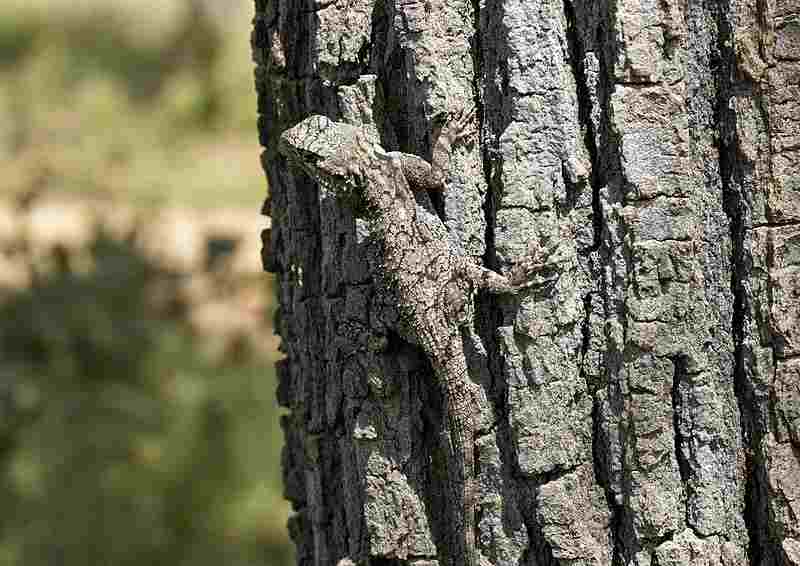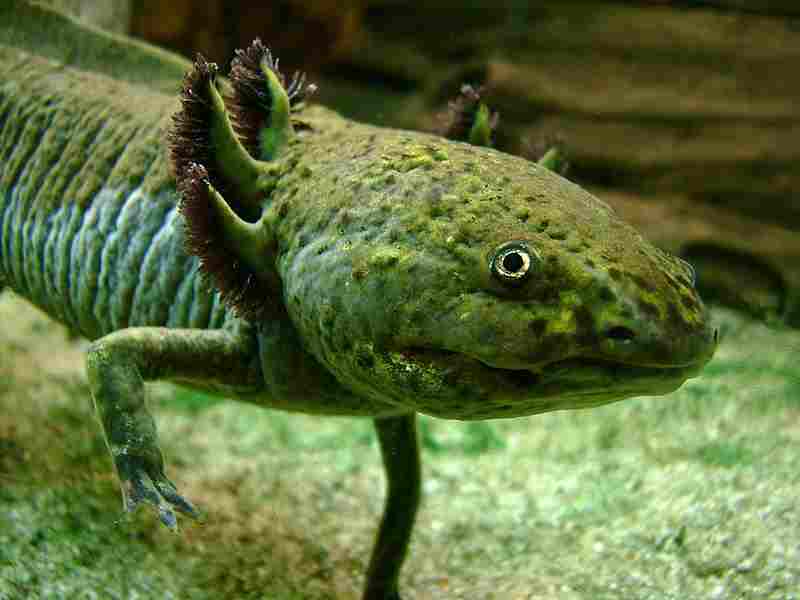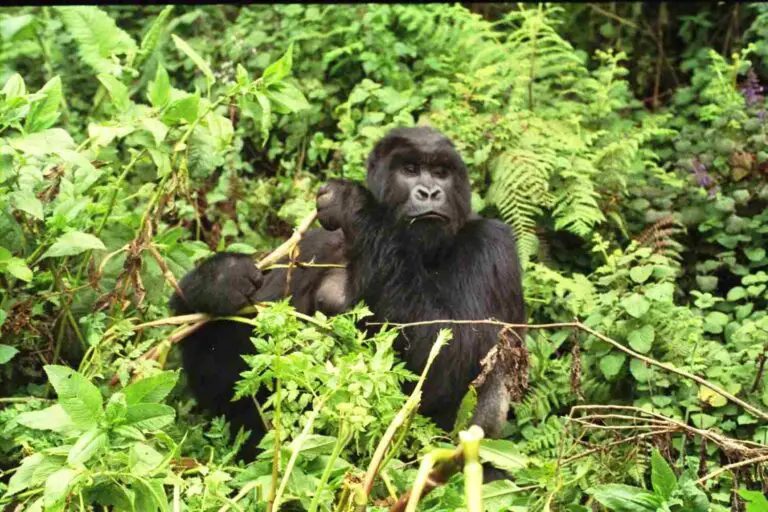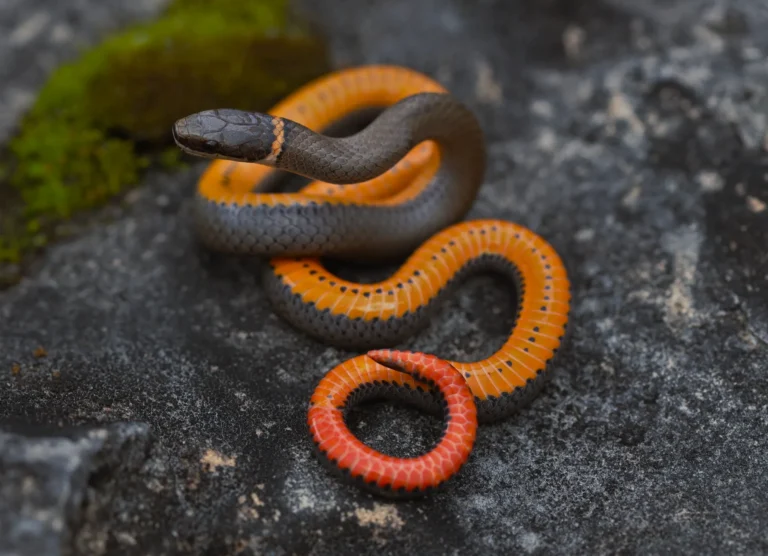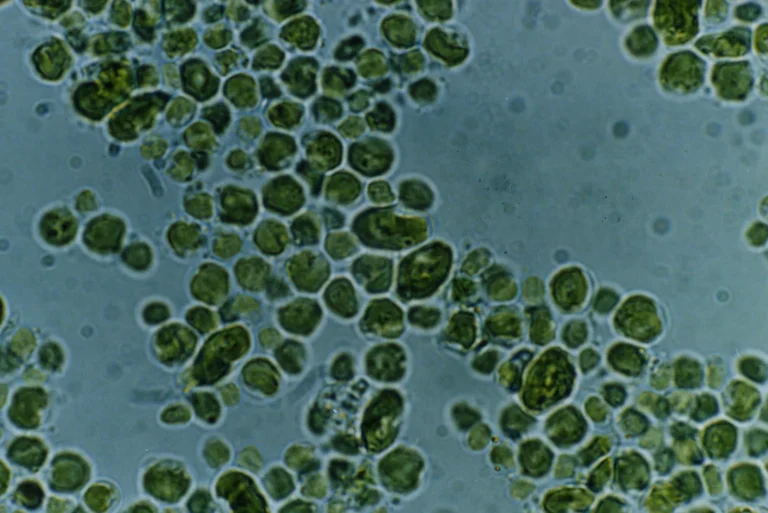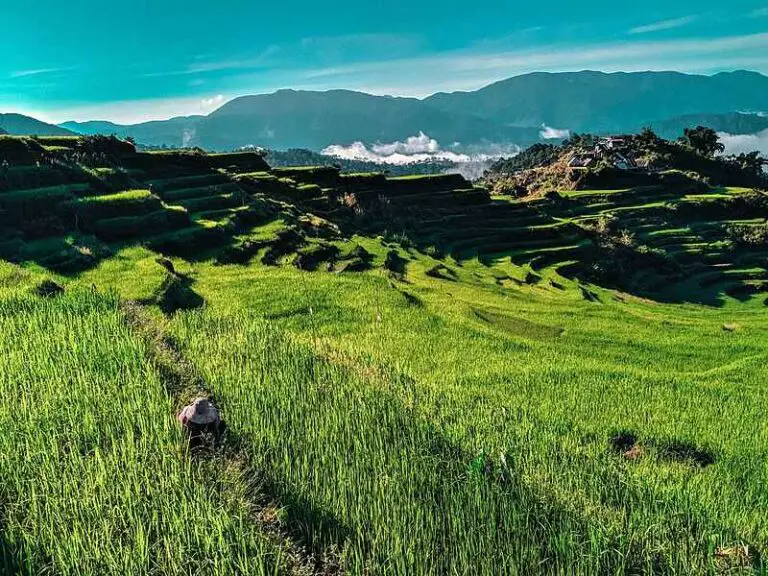5 Biotic Factors in the Tundra and their Attributes Discussed
Biotic factors in the tundra are; trophic relations like feeding and symbiosis; organic adaptation like camouflage and migration; vegetative structure; food resources; and microbiological cycling.
This article discusses biotic factors in the tundra and their attributes, as follows;
1). Trophic Relations (as one of the Biotic Factors in the Tundra)
Trophic relations in the tundra are the complex interrelationships and interactions that occur between various organisms in different trophic levels of the tundra food chain, energy pyramid, and food web.
There are various ways in which trophic relationships are important, in the tundra. These include; ecosystem-functioning, sustainability, energy-transfer and nutrient-recycling.
Trophic relationships in the tundra constitute an important biotic factor, because these relationships are driven by biological organisms, organic matter, and biological process(es).
Factors, or organic groups, involved in trophic relationships within the tundra, are; producers, primary consumers, secondary consumers, and tertiary consumers; although some ecological models include a fifth trophic level, occupied by quaternary consumers.
*Producers in the Tundra
The basal/lowest trophic level in the tundra biome is occupied by producers, which are mainly algae, symbionts, vascular and non-vascular plants.
Producers are distinguished for their ability to capture and convert solar radiation into biomass, which herbivorous organisms can consume as food.
Examples of producers in the tundra are; lichens, mosses, sedges, dwarf shrubs and grasses.
*Primary Consumers in the Tundra
Primary consumers in the tundra are herbivores, and typically occupy the trophic level (2) above producers at the bottom.
These herbivores directly feed on plant matter derived through photosynthesis.
In order to survive the harsh tundra climate and manage their plant-based diet, tundra herbivores have adaptive features like thick fur and subcutaneous layer for insulation [6]; as well as digestive specializations to extract nutrients efficiently from plant materials.

*Secondary Consumers in the Tundra
Secondary consumers occur directly above primary consumers in the tundra.
These organisms are mostly carnivores, and survive by preying on herbivorous organisms.
Examples of primary consumers in the tundra are; wolverine, snowy owl, rough-legged hawk, and Arctic fox.
Bioenergy is obtained by the organisms, mainly from herbivores which they prey upon.
As predators, they have adaptive features like;
1. Keen sensitivity
2. Thick fur covering
3. Well-evolved hunting skill
*Tertiary Consumers in the Tundra
Tundra tertiary consumers are usually apex predators in their territory.
They include large predatory animals, some of which have omnivorous feeding behavior.
Through their feeding activities, tertiary consumers help regulate the population of prey.
Some examples of tertiary consumers occurring in the tundra are; golden eagles and polar bears.

*Decomposers in the Tundra as Contributors to Trophic Relations
Decomposers are organisms whose activities lead to biodegradation, and the release of nutrients from organic materials back to the environment [3].
Examples of decomposers in the tundra are fungi and bacteria.
These organisms are biotic components and part of the system of trophic relations in the tundra, because they ensure that natural resources like carbon in organic matter, are conserved, by breaking down plant and animal remains to form minerals that are assimilated by the soil.
Trophic relations are at the center of all biotic dynamics in the tundra ecosystem. They are in turn affected by factors like;
1. Resource availability
2. Climate
3. Human interference
2). Organic Adaptation
Organic adaptations in the tundra are physiological as well as behavioral features developed by organisms in order to survive and function effectively under the conditions that occur in tundras.
Some adaptations of organisms in the tundra are;
1. Compact morphology
2. Resource conservation
3. Cold-tolerance and Insulation
*Compact Morphology as an Adaptation of Tundra Organisms
Due to limitations in the availability of nutrients, and the short duration of the growing season, plants and animals in the tundra tend to have compact morphological features, and a generally smaller size than their counterparts in other biomes.
Many tundra plants grow close to the ground at low-height; or morphology that enables them to effectively manage available resources.
The same is true for tundra animals like Arctic hares and lemmings, which have small, compact statures for nutrient and energy conservation.

*Resource Conservation as an Adaptation of Tundra Organisms
Organisms in the tundra have to survive with limited nutrients, water and food.
To achieve this, they have features that enable them conserve resources, such as well-developed shallow roots, and symbiotic relationships with other organisms.
*Cold-Tolerance and Insulation as Adaptations of Tundra Organisms
The cold tolerance of tundra organisms enables them to reduce the rate at which they lose heat, and allows them survive the frigid environmental conditions.
Some features of animals in the tundra that enable them tolerate cold include; fat layers and dense plumage or fur. These are evident in bears, ptarmigans and Arctic foxes, among other tundra animals.
*Camouflage as an Adaptation of Tundra Organisms
Both birds and mammals in the tundra have color-variable fur coats or plumages that alternate between lighter and darker shades to provide camouflage during winter and summer, respectively [1].
Camouflage helps these organisms blend into the backdrop of the landscape (which could be snowy or brown-green in winter and summer) in order to effectively elude predators, or stalk prey.
Lastly, tundra organisms also have adaptive features that are behavioral, including;
1. Migration
2. Hibernation
3. Communicative vocalization
4. Communal grazing and hunting

3). Vegetative Structure (as one of the Biotic Factors in the Tundra)
Vegetation structure in the tundra is distinctive, and can be viewed as a product of adaptation to the harsh conditions of the environment.
Characteristics of vegetation in the tundra include low-height, dense ground-cover growth pattern, and uneven distribution. Each of these is discussed briefly below;
*Low-Height as an Attribute of Tundra Vegetation Structure
Due to the harsh conditions of the tundra environment, plant growth is generally limited.
Most plants in the tundra, as a result, can be described as low-growing; hardly reaching one meter in vertical height.
The low-height structure of tundra plants protects them from damage by high winds (which occur in winter [5]), while improving their cold and drought tolerance.
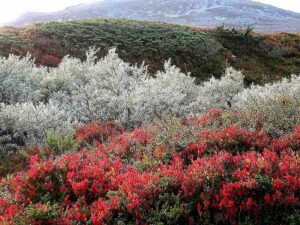
*Dense Ground-Cover Growth Pattern
Plants like mosses, dwarf birch, and Arctic willow have evolved a dense pattern of growth in the tundra.
Such plants can be called hummock-forming plants or cushion vegetation, and are fairly common in the tundra.
Due to their tightly-spaced distribution across a given area, cushion plants form dense vegetative mats that serve as micro-habitats for some organisms.
This pattern of growth enables the plants conserve water by locking-in moisture, as well as heat, and reduces the impact of elements on vegetation.
*Uneven Distribution of Vegetation in the Tundra
The overall areal distribution of plants in the tundra is patchy or uneven, so that some areas have significantly-dense growth, while others have little to none.
This feature is the result of factors like areal variations in soil drainage, nutrient availability, and moisture.
Types of vegetation also vary spatially across most tundra landscapes; with drought-tolerant grasses and shrubs dominating drier zones, while lichens, mosses and some angiosperms dominate the more-humid zones.
As stated earlier in this article, plants in the tundra generally have shallow root systems, designed to maximize moisture absorption from the thin active layer overlying permafrost (which is impenetrable).
Factors asides permafrost that contribute to driving plant adaptations in the tundra are; climate, nutrient availability, and the need to conserve water.
4). Food Resources (and their Availability)
The availability of food resources in the tundra is low, especially in comparison to more ecologically-robust ecosystems like tropical rainforests.
This is due to a combination of factors including;
1. Short growing season
2. Low temperatures
3. Absence of trees
4. Permafrost and low soil penetrability
Low availability of food resources in the tundra can be traced down to the low growth rate of plants, which are the primary food source in terrestrial ecosystems [2].
Because tundra plants are sparse in their growth and distribution, herbivorous populations are less-abundant than in grasslands and other highly-vegetated biomes.
Also, there are fewer and smaller micro-habitats for organisms like birds, insects and rodents to shelter; implying that large prey populations cannot be supported effectively by the tundra.
To cope with unstable and limited food supply, herbivorous tundra animals employ seasonal grazing behavior and migration. Carnivores may hibernate to conserve energy; migrate seasonally in search of prey; or adopt an omnivorous diet to supplement their nutrition.
5). Microbiological Cycling (as one of the Biotic Factors in the Tundra)
Microbiological cycling is an important biotic factor in the tundra, as it involves biological organisms and processes that work to sustain the flow of nutrients across the trophic levels, as well as between abiotic and biotic segments of the ecosystem.
Microorganisms that live in the tundra include; cyanobacteria and some species of fungi that are tolerant of low temperatures.
These organisms are essential toward biodegradation, soil formation, nitrogen fixation, and other processes that sustain essential biogeochemical systems like the oxygen and carbon cycles.
*Decomposition and Nutrient Cycling in the Tundra
Decomposition and nutrient cycling are outcomes of microbiological activity in the tundra.
Microbes like fungi and bacteria drive decomposition by acting on organic matter, which they break down to release nutrients.
Decomposition invariably leads to nutrient-cycling because the organic matter is converted to mineral-form after it is broken down, which can be assimilated by the soil.
Examples of nutrients derived by decomposition are; phosphorus, carbon and nitrogen.
*Nitrogen Fixation as an Outcome of Microbiological Cycling in the Tundra
Some species of bacteria are capable of converting nitrogen from its gaseous form in the atmosphere, to an absorbable mineral that is assimilated by soil and taken-up by plants.
Such bacteria usually form symbiotic relationships with plants, and their activities make nitrogen available in tundra soils.
*Tundra Microbial Cycling and Methane Dynamics
Methanogenic microbes including archaea, produce methane in significant amounts from anaerobic digestion of organic matter.
Anaerobic digestion occurs in the tundra, especially in waterlogged soil zones.
The methane-cycling process also involves some oxidizing bacteria that can actively consume and utilize methane.
*Microbial Communities in the Tundra
There are diverse communities of microorganisms that are cold-tolerant, and can survive in tundras.
Several of these microbes produce antifreeze proteins [4], or other mechanisms to withstand low temperatures.
An example of a microbe in tundra microbial communities is cyanobacteria, which is crucial to the formation and stabilization of soil.
Conclusion
Biotic factors in the tundra are;
1. Trophic Relations
2. Organic Adaptation
3. Vegetative Structure
4. Food Resources
5. Microbiological Cycling
References
1). Di Bernadi, C.; Thierry, A. M.; Eide, N. E.; Bowler, D. E.; Rød-Eriksen, L.; Blumentrath, S.; Tietgen, L.; Sandercock, B. K.; Flagstad, Ø.; Landa, A. (2021). "Fitness and fur colouration: Testing the camouflage and thermoregulation hypotheses in an Arctic mammal." J Anim Ecol. 2021 May;90(5):1328-1340. Available at: https://doi.org/10.1111/1365-2656.13457. (Accessed 16 June 2023).
2). Fernando, W. G. (2012). "Plants: An International Scientific Open Access Journal to Publish All Facets of Plants, Their Functions and Interactions with the Environment and Other Living Organisms." Plants (Basel). 2012 Feb 6;1(1):1-5. Available at: https://doi.org/10.3390/plants1010001. (Accessed 16 June 2023).
3). Iqbal, N. (2020). "Role of Decomposers in Agricultural Waste Management." Available at: https://www.intechopen.com/chapters/73709. (Accessed 16 June 2023).
4). Rizzo, C.; Lo Giudice, A. Life from a Snowflake: Diversity and Adaptation of Cold-Loving Bacteria among Ice Crystals." Crystals 2022, 12, 312. Available at: https://doi.org/10.3390/cryst12030312. (Accessed 16 June 2023).
5). Scott, P. A.; Rouse, W. R. (1995). "Impacts of increased winter snow cover on upland tundra vegetation." Climate Research 5(1):25-30. Available at: https://doi.org/10.3354/cr005025. (Accessed 16 June 2023).
6). Zhu, D.; Ciais, P.; Chang, J.; Krinner, G.; Peng, S.; Viovy, N.; Peñuelas, J.; Zimov, S. (2018). "The large mean body size of mammalian herbivores explains the productivity paradox during the Last Glacial Maximum." Nat Ecol Evol. 2018 Apr;2(4):640-649. Available at: https://doi.org/10.1038/s41559-018-0481-y. (Accessed 16 June 2023).
